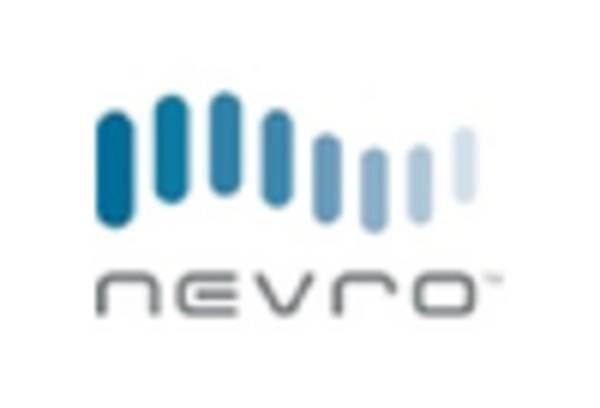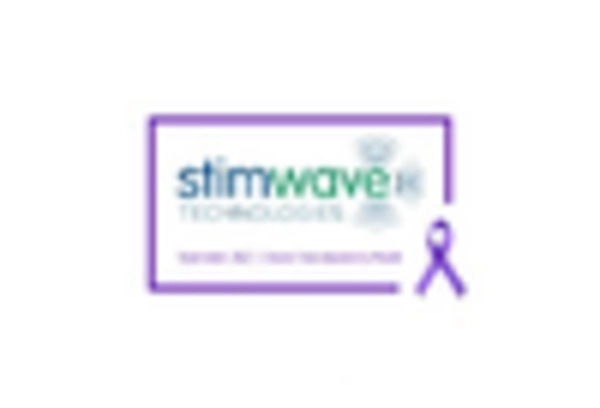Growing Geriatric Population
Italy has one of the highest proportions of elderly individuals in Europe, which is a significant factor driving the spinal cord-stimulator market. The aging population is more susceptible to chronic pain conditions, such as arthritis and degenerative disc disease, leading to an increased demand for effective pain management solutions. By 2030, it is estimated that over 25% of the Italian population will be aged 65 and older. This demographic shift necessitates the development and adoption of advanced medical technologies, including spinal cord stimulators, to address the unique healthcare needs of older adults. As the healthcare system adapts to this demographic change, the spinal cord-stimulator market is likely to see substantial growth.
Enhanced Reimbursement Policies
The evolution of reimbursement policies in Italy is playing a crucial role in the growth of the spinal cord-stimulator market. Recent changes in healthcare regulations have led to improved coverage for neuromodulation therapies, making spinal cord stimulators more accessible to patients. Insurance providers are increasingly recognizing the long-term cost-effectiveness of these devices, as they can reduce the need for ongoing medication and additional medical interventions. As reimbursement frameworks continue to evolve, more patients are likely to consider spinal cord stimulators as a viable treatment option for chronic pain. This trend is expected to contribute to a steady increase in market demand, as financial barriers are lowered and patient access improves.
Rising Incidence of Chronic Pain
The increasing prevalence of chronic pain conditions in Italy is a primary driver for the spinal cord-stimulator market. Conditions such as neuropathic pain, fibromyalgia, and failed back surgery syndrome are becoming more common, affecting a significant portion of the population. According to recent health statistics, approximately 20% of adults in Italy experience chronic pain, which necessitates effective management solutions. Spinal cord stimulators offer a promising alternative to traditional pain management methods, such as opioids, which have been associated with various side effects and dependency issues. As healthcare providers seek innovative ways to address chronic pain, the demand for spinal cord stimulators is likely to rise, thereby propelling market growth in the coming years.
Advancements in Medical Technology
Technological innovations in the field of neuromodulation are significantly influencing the spinal cord-stimulator market. Recent developments include the introduction of closed-loop systems that can automatically adjust stimulation based on real-time feedback from the patient. These advancements enhance the efficacy of pain management and improve patient outcomes. Furthermore, the integration of wireless technology allows for remote monitoring and adjustments, making treatment more convenient for patients. In Italy, the market for spinal cord stimulators is projected to grow at a CAGR of around 8% over the next five years, driven by these technological advancements. As healthcare providers increasingly adopt these cutting-edge solutions, the spinal cord-stimulator market is expected to expand rapidly.
Increased Focus on Minimally Invasive Procedures
There is a growing trend towards minimally invasive surgical techniques in Italy, which is positively impacting the spinal cord-stimulator market. Patients and healthcare providers are increasingly favoring procedures that reduce recovery time and minimize surgical risks. Spinal cord stimulators can often be implanted using less invasive techniques, which aligns with the current healthcare focus on patient-centered care. This shift is reflected in the rising number of procedures performed annually, with estimates suggesting a growth of around 15% in minimally invasive spinal surgeries over the next few years. As more patients seek these options, the demand for spinal cord stimulators is expected to rise, further driving market expansion.

















Leave a Comment